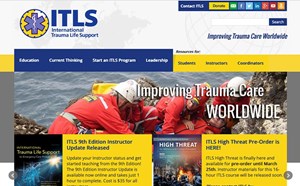
The Transport Quality Metrics and Improvement Project
The transport of patients to medical centers for specialized care demands monitoring the quality of care provided during transport and its impact on patient outcomes. Accurate assessment of quality indicators and patient outcomes requires the use of a standard language permitting comparisons among transport programs. Prior to 2013, no consensus existed in the literature on a set of quality metrics for transport.
In June 2011, transport leaders from the six largest neonatal and pediatric transport teams in Ohio convened to achieve consensus on a set of transport-specific metrics and definitions. Candidate quality metrics were identified through literature review and those metrics already tracked by each program. Consensus methodology facilitated the group’s identification of 23 agreed-upon metrics and definitions. These programs began collecting metric data and overcoming the early obstacles associated with a new project. Although this set of metrics generated a lot of interest from programs across the country, there was concern that these “Ohio” metrics may not be generalizable outside that state.
The Quality Metrics Summit was held during the American Academy of Pediatrics (AAP) Section on Transport Medicine program in October 2012. Built on the foundation of the Ohio work and using Delphi technique, 12 “must have” metrics were identified by transport leaders and frontline providers from all over the U.S. Since then dozens of programs have been tracking their performances using this set of national metrics.
In July 2013, the Air Medical Physician Association (AMPA) used the same methodology that had been successfully used at the AAP Metric Summit to gain consensus on a national metric set applicable to adult transport best practices. The AMPA Quality Metrics Summit in Denver, Colorado convened 68 leaders in adult and pediatric transport medicine from across the U.S. and parts of Canada. AMPA is proud to have their own national consensus set of 22 metrics and definitions. Some of these were borrowed from the AAP Summit metric set while others are specific to adult care.
Although these metric sets are helpful for reviewing individual program’s performance trends, the Metric Project itself offered no mechanism for sharing these results and gauging the quality of their performances through comparison to others.
However, all this has now changed.
In January 2014, the Ground and Air Medical Quality Transport (GAMUT) database was created to fill this void. This secure web-based database uses the highly successful Research Electronic Data Capture (REDCap) infrastructure. It borrows its name from the expression “run the gamut” which describes the vision for this database: one that welcomes all types of transport programs big and small, academic and corporate, adult and pediatric -- all those that wish to collaborate with others using benchmarking to drive the quality of care they provide. We have successfully tested the tracking and reporting of the 2 national metric sets and are now prepared to invite large-scale participation from all interested transport teams. In this next phase of the project, teams' data contributions will determine the performance benchmarking goals necessary to begin the quality improvement phase of this work.
We hope you share our excitement for the Transport Quality Metric and Improvement project and the GAMUT database. We're grateful for the hundreds who have contribute to this project in various ways. Your program’s participation is important in building on the 20,000+ patient contacts that have already been cataloged. It will enrich the GAMUT database and enable it to fulfill our field's evolving needs for quality measurement and improvement.
The vision
To facilitate medical transport programs of all types collaborating to improve the quality of care they deliver.
This is achieved though the following:
- Establishing strict definitions for quality metrics that are agreed-upon, important, reliable, relevant and feasible to data gather.
- Developing a database and the infrastructure for programs to track, report, and analyze their performance by comparing it to other programs.
- Identifying practices used by the high performing transport teams for each of the metrics and widespread adaptation of these best practices across participating programs.
The GAMUT database is a free resource for transport teams to track, report and analyze their performance on transport specific quality metrics by comparing it to other programs.
Project related resources:
- The Neonatal Pediatric Transport Quality Metrics and Improvement project webpage and national metric set. Learn More
- Quality Metrics in Neonatal and Pediatric Critical Care Transport: A Consensus Statement. Pediatr Crit Care Med. 2013; 14:518-525
- Measure, Report, Improve: The Quest for Best Practices for High-Quality Care in Critical Care Transport. Clinical Pediatric Emergency Medicine, 2013 Sept; 14(3):171-79



